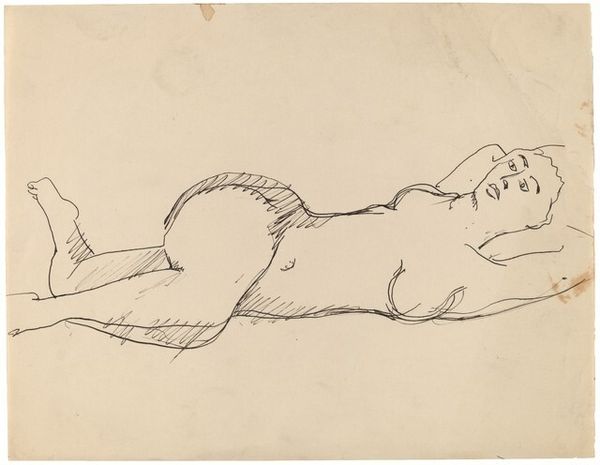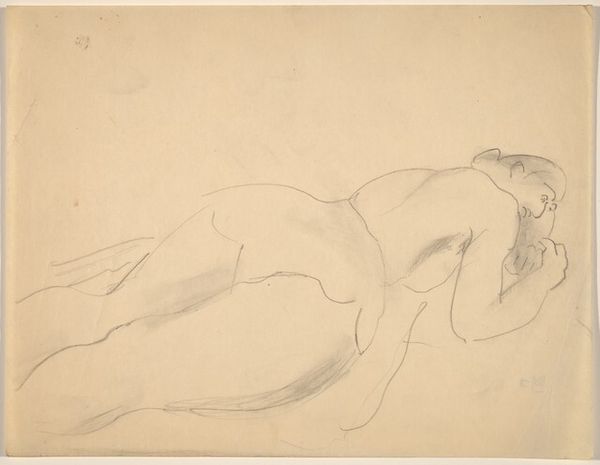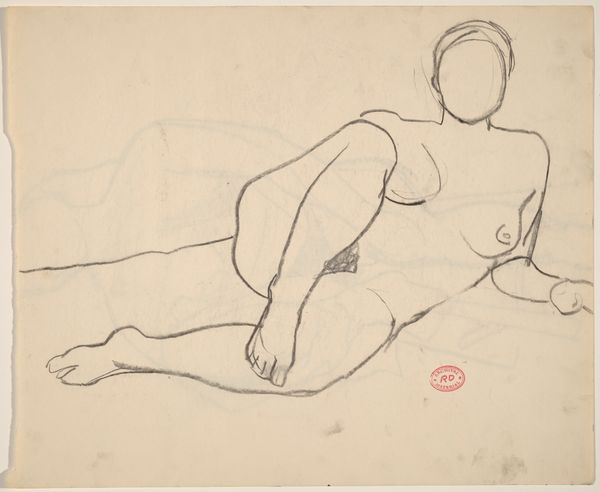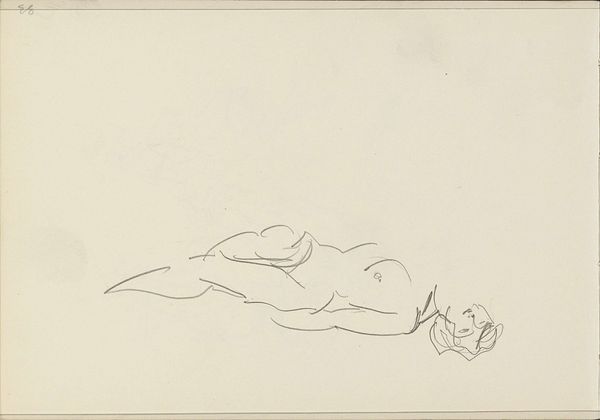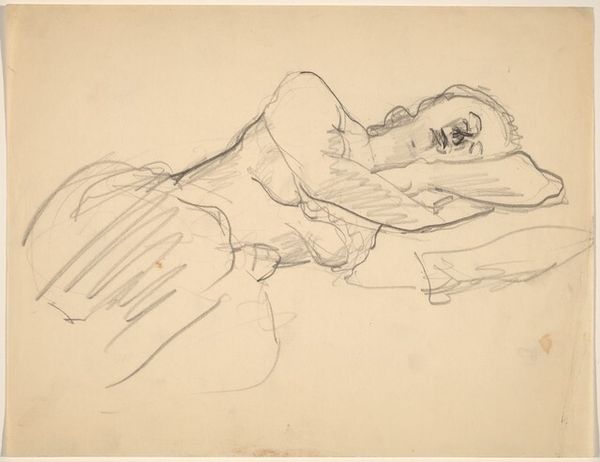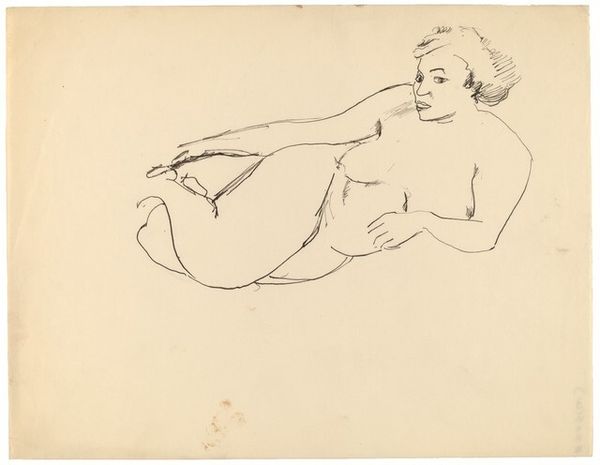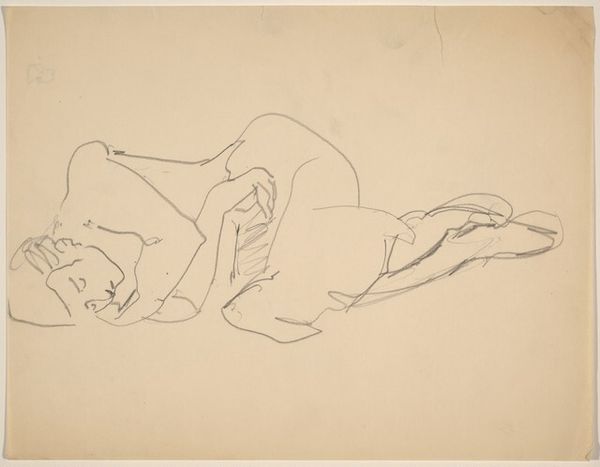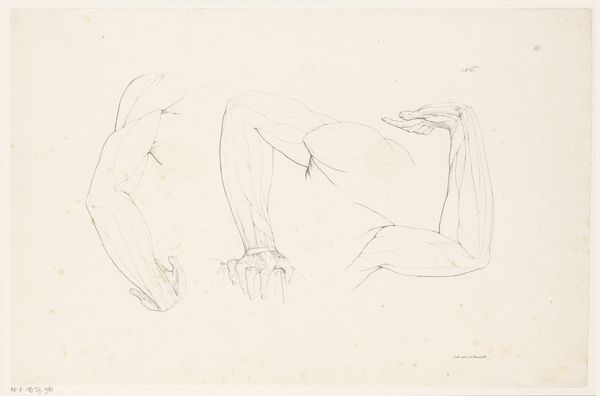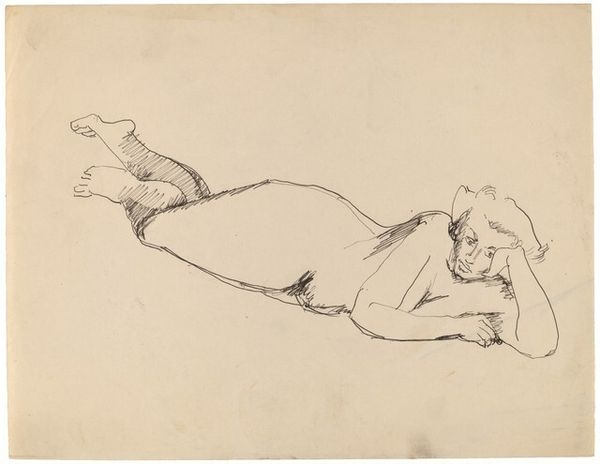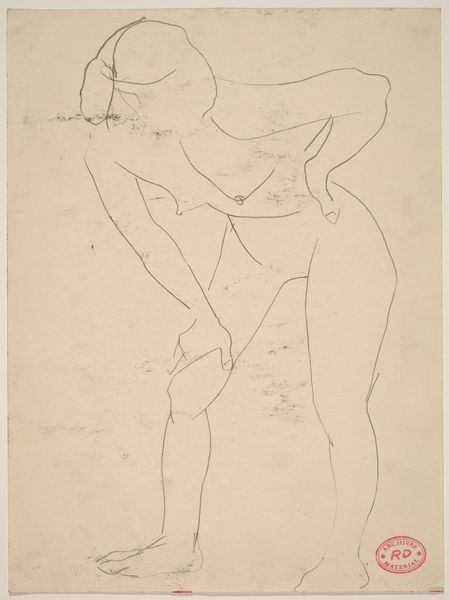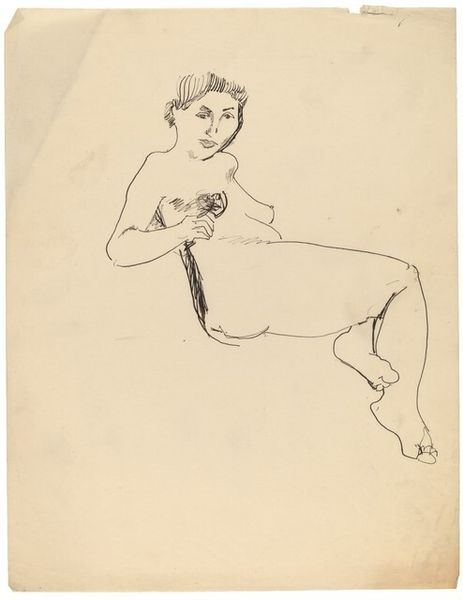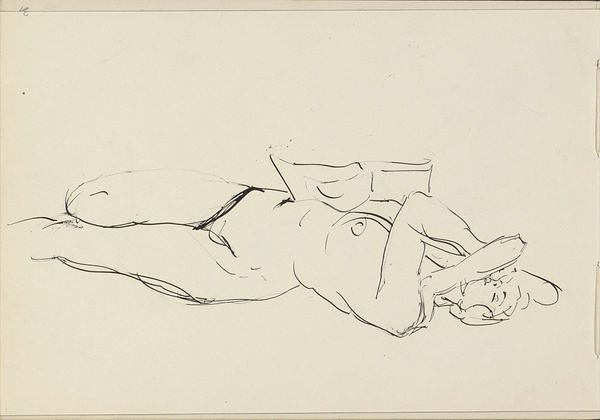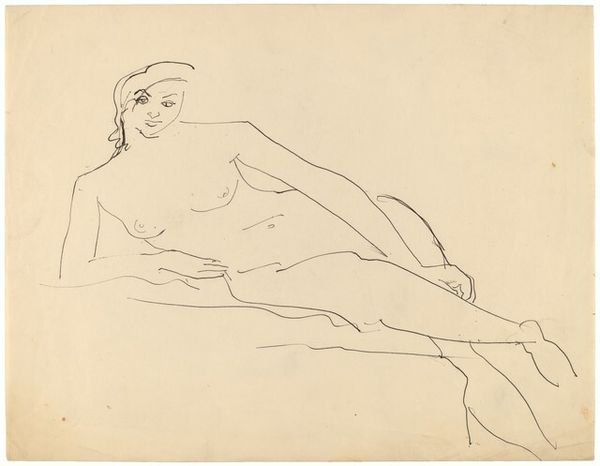
drawing, ink, pen
#
portrait
#
drawing
#
imaginative character sketch
#
light pencil work
#
ink drawing
#
pen sketch
#
pencil sketch
#
figuration
#
personal sketchbook
#
ink
#
idea generation sketch
#
ink drawing experimentation
#
pen-ink sketch
#
sketchbook drawing
#
pen
#
nude
#
erotic-art
Dimensions: overall: 21.5 x 27.9 cm (8 7/16 x 11 in.)
Copyright: National Gallery of Art: CC0 1.0
Curator: Here we have "Female Nude Lying on Back, Leaning to the Right," a pen and ink drawing by Mark Rothko. The date of execution is unfortunately unknown. Editor: It strikes me as immediately intimate. There's a vulnerability in the pose and expression. A classical odalisque turned on its head; rather than posing serenely, she almost seems caught off guard. Curator: I'm drawn to the economy of line; notice how Rothko uses simple contours to suggest volume and depth, eschewing any elaborate modeling. The figure's form is implied, not rendered. It is a distillation of form to its most essential elements. Editor: Indeed, it echoes the simplification we see in other symbolic representations of the reclining nude throughout history – a figure linked to ideas of fertility, pleasure, and even death in some cultures. The lines, so simple as to feel almost hasty, paradoxically underscore the enduring weight of this motif. But where, culturally, is Rothko situating the figure? Curator: Note the orientation of the figure in relation to the page itself: slightly diagonal, which prevents the image from becoming static. Editor: You’re right! The subtle angling creates a sense of dynamism, challenging the more static pose often expected in this imagery. But if we accept the reading as symbolic of something beyond itself – and I think we must – what symbols did the artist deploy? Curator: Symbols of a human. This seems to be, at the base, a study of essential human existence. Consider how Rothko would later further reduce figuration in his mature abstract work. It foreshadows, perhaps, a life-long reduction to only those things necessary for an impactful statement. Editor: So in its starkness, it prefigures a move toward archetypal forms, stripped bare. Perhaps it acts as a raw confrontation with the fundamental symbols we project onto ourselves and others. The joyfulness is not really happiness; it is… existing. I do appreciate this. Curator: A compelling interpretation. It has been a pleasure analyzing the symbolic forms, even in their starkness. Editor: And I am reminded of how lasting motifs continually reflect back the complex narrative of human identity itself.
Comments
No comments
Be the first to comment and join the conversation on the ultimate creative platform.

